Learn to make a cute tutu skirt for your little princess that will bring joy every day. These tulle skirts are so girly and it’s impossible not to fell in love with them! Follow this easy tutorial to get the best tips on how to sew with tulle fabric and make your own beautiful tulle skirt in less than an hour.
Easy tutu skirt tutorial
This airy and fluffy tulle skirt is fully sewn, it is not tied or knotted.
I made a fair amount of tulle skirts over the past few years (as I had a small business selling handmade tulle skirts) and I want to assure you this is a beginner-friendly project. I hope you’re not afraid to sew with tulle fabric, because it does not fray or snag, and I think it is manageable for most people.
From my experience, sewing with tulle is much easier than with jersey or satin. In fact, I personally find it just a bit more difficult than sewing with cotton.
I’ll list below all the tips and tricks that I can think of, so you’ll have a blast your first time sewing with tulle!
My daughter absolutely loves these tulle skirts and their fluffiness. All the tutu skirts are also very comfortable, due to the elastic waistband.
She loves to play pretend each and every day.
Anyway, these cute skirts are great for many occasions and a great gift for any little girl.
For example, the yellow and black tulle skirt is great for a bumblebee costume.
The red and white tutu is perfect for special occasions like Valentine’s Day, smash the cake parties or the holidays.
And the dusty pink tutu is an everyday staple that will bring sparkle to an ordinary day at home.
In addition, it will look amazing at birthday parties, photoshoots, or ballet/dance recitals.
All the skirts are made with two soft tulle layers and have an exposed elastic waistband. It’s an easy and quick sewing project.
As you might have noticed, the tutu skirts are semi-sheer, but this is the type of skirt that my daughter wears with leggings and even jeans or over dresses, so we don’t really mind.
Of course, you can make it with three or four tulle layers, or maybe add a lining if you like, for extra coverage. It’s really simple!
What can you make with tulle?
Tulle fabric is most commonly used to make tulle skirts, and I have written a lot of tutorials on how to sew different patterns. Here are a few of my most popular posts: Simple tulle skirt in 10 easy steps / Tiered tulle skirt / Circle tulle skirt.
However, you can also make reusable produce bags with tulle, and tulle scrunchies too!
Are you ready? Let’s sew this pretty DIY tutu skirt!
I made all my skirts for my 3.5 years old daughter and used these measurements:
- Length of the skirt – 12 inches
- Waist measurement -20 inches
To make your tutu skirt in a different size, it might be useful to check this tutu size chart for children. However, the chart is based on estimates, so it’s best to accurately take your child’s measurements.
DIY tutu skirt – sewing supplies
- 1 yard soft tulle fabric
- cotton/satin fabric – for the fabric-covered elastic waistband
- satin ribbon/ velvet/ grosgrain trim (optional)
- 1-inch wide elastic
- sewing machine
- sewing machine needle / jersey/ballpoint needle
- matching thread
- fabric scissors
- sewing pins
- sewing gauge
How to sew a tulle skirt with elastic waistband – step-by-step tutorial
Step 1 – Cut the fabric pieces
For my tutu skirts, I used two tulle layers, each being 118 inches / 300 cm wide and 10 inches tall.
If you can’t find 118-inches wide soft tulle, no problem – you can simply join fabric widths to make an extra-wide panel. Just make sure to use a soft tulle fabric – the type that’s available in bolts.
If your tulle fabric is wrinkled, you can iron it directly – but not with a hot iron, because the tulle will melt instantly. Instead, use the lowest heat setting available.
For the waistband, cut a fabric piece that is (hip size + 4 inches) wide and 3 1/2 inches tall.
If you want to change the size of this skirt, the 118 inches width of the tulle layers should fit a girl from size 1T or 2T (standard waist size at this age is 20 inches) to about 10T (standard waist size – 24 inches). Adjust the length of the skirt and it’ll be just fine.
Step 2 – prepare the waistband casing
I cut the fabric strip for the waistband 24 inches long x 3 1/2 inches wide. This way, the casing will be just perfect for inserting a 1″ elastic, not too narrow and not too wide either.
Now, take the waistband piece and sew the short ends together to make a tube.
Step 3 – sew the back seam
Take one of the tulle layers and sew the side seam. Repeat this for the second tulle layer.
To sew the tulle seams without puckering, switch your needle for a new ballpoint/jersey needle – size 70/10 is what I used. Then, use a short straight stitch and slow down your sewing machine speed to avoid puckering.
Find more tips on how to sew tulle fabric on your regular sewing machine here.
Step 4 – gather the tulle layers
Again, keep the stitch length to the longest possible and run a basting stitch for each one of the two layers that compose this skirt.
Leave long thread tails at the beginning and end of each row, and do not backstitch at all!
Are you nervous about this step? You shouldn’t be. Yes, you’ll baste approx. 236 inches (600 cm) in total, however, it will be easy, I promise. I finished this step in 4 minutes, but if you are a beginner, sew slowly – you’ll be done in 10 minutes at the most.
To be able to easily get the skirt over the hips, the skirt opening will be hip measurement + 4 inches. For my skirt, that means 20+4=24 inches.
Now let’s gather the top of all the tulle layers to fit the waistband casing. Grab the bobbin thread with one hand and push the tulle fabric over with the other hand.
Continue until the gathers are evenly spaced and match the desired measurement, 24 inches in my case, then tie all the threads in a knot.
Step 5 – sew the tulle layers together
Place one tulle layer inside the other and sew them together, the wrong side of the first layer to the right side of the second.
Step 6 – attach the waistband to the skirt
Pin the waistband to the tulle skirt, right sides together, and sew with a 1/2” seam allowance.
Step 7
Turn the raw edge under 1/2”, then fold the waistband so its width is about 1 ½ inch, to accommodate the width of the elastic. Use pins and a sewing gauge for this step.
Stitch around the lower edge of the waistband casing, approx. 1/8” from the edge, leaving a small opening for the elastic. Backstitch at both ends.
Step 8 – insert the elastic and finish the waistband
Cut the elastic band 1-2 inches smaller than the waistline measurement – it should feel comfortable, you better try it on.
Insert the elastic through the casing using a safety pin. Make sure the elastic is not twisted inside the casing. Overlap the ends of the elastic and sew them together, then close the small gap in the waistband. Start with the needle is in the down position and go slowly. You will need to stretch the elastic a bit as you sew – but do not stitch into the elastic itself.
If you wish to secure your elastic and prevent it from twisting, stitch vertically across the elastic at the back seam.
Step 9 (optional) – add a ribbon trim
Sew the desired ribbon to the tulle skirt as close to the outer bottom edge as possible. Once sewn, the ribbon tends to curl, and that adds volume to the skirt. Therefore, pay attention to how the golden ribbon curls – you want the skirt to curl the right way.
Do your best to align the bottom edge of the ribbon with the bottom edge of the tulle, and choose a thread that matches your ribbon.
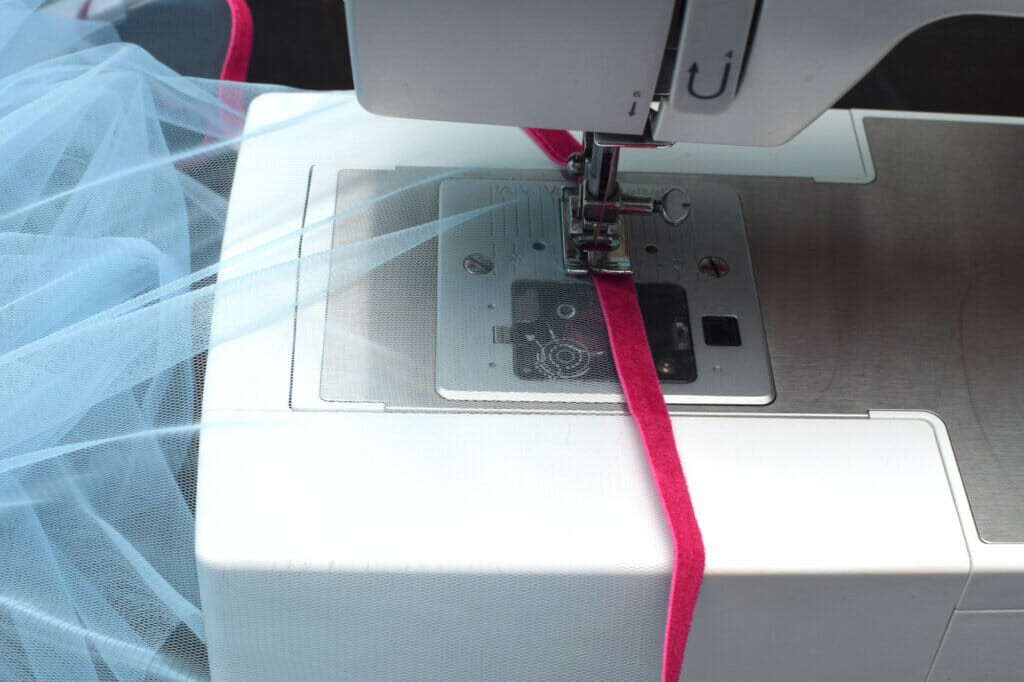
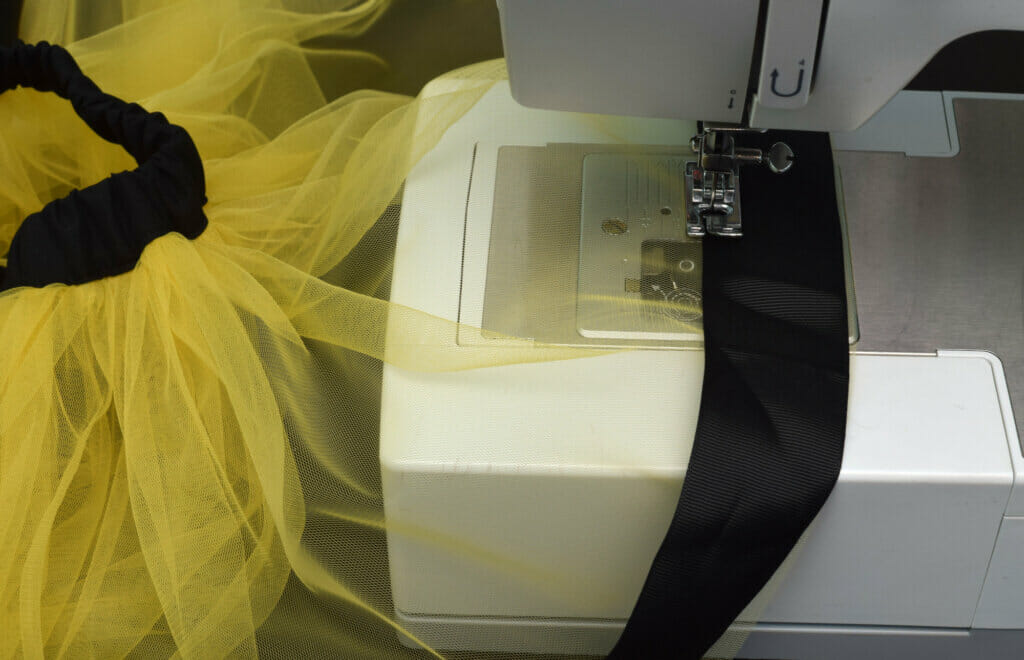
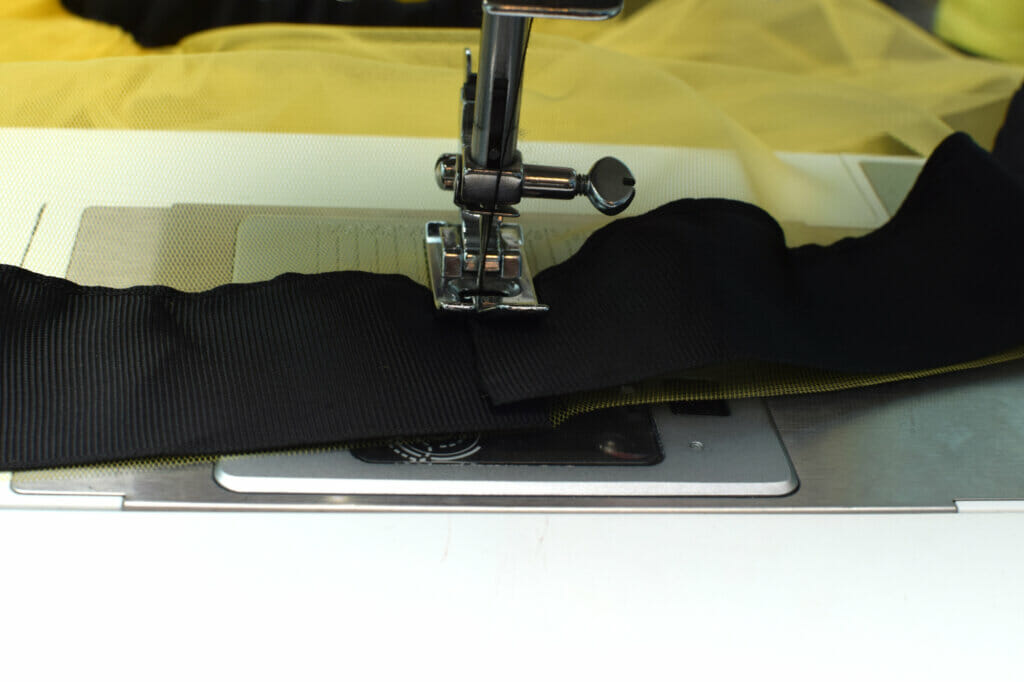
It’s better to use a longer straight stitch, to avoid having too many holes in the ribbon. Make sure to backstitch at the beginning and end.
Sew until you reach your starting point and when you get there, overlap a bit the ends of the ribbon, then run a vertical stitch to hold them in place.
Furthermore, you can jazz up the skirt with a ribbon bow.
Can you guess which tutu skirt is my daughter’s favorite?
Of course, it’s the pink and blue bubblegum tutu skirt!
How to care for your tutu skirt
You can wash your tulle skirt by hand, or in the washing machine – in this case, place it in a laundry bag, and use a mild detergent and a gentle cycle. Wash in cold water and let it air dry.
If your tulle skirt or the ribbon at the bottom will wrinkle (it will happen, eventually), you can iron the skirt directly. Use the iron at a low heat setting, and your cute skirt will look as good as new!
Did you find this tutorial helpful? I’d like to hear what you think of it! And I would LOVE to see pictures! If you give this tutu skirt a try, please tag me on Instagram or Facebook.

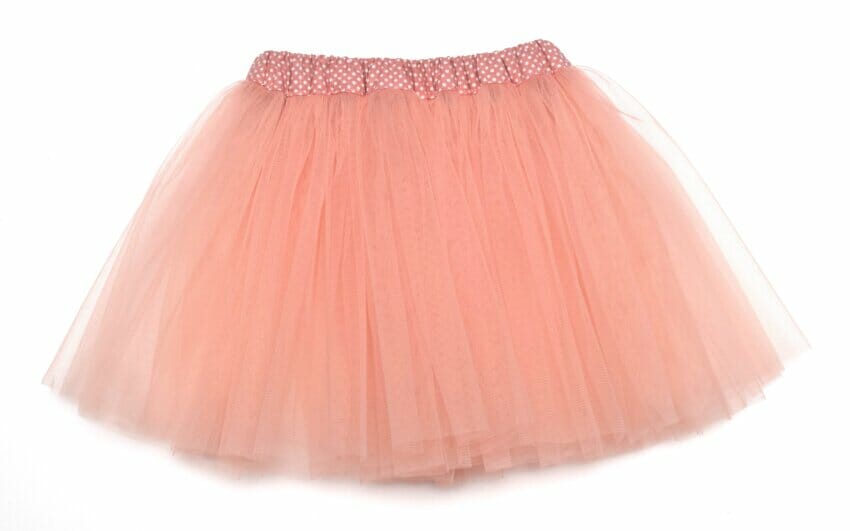
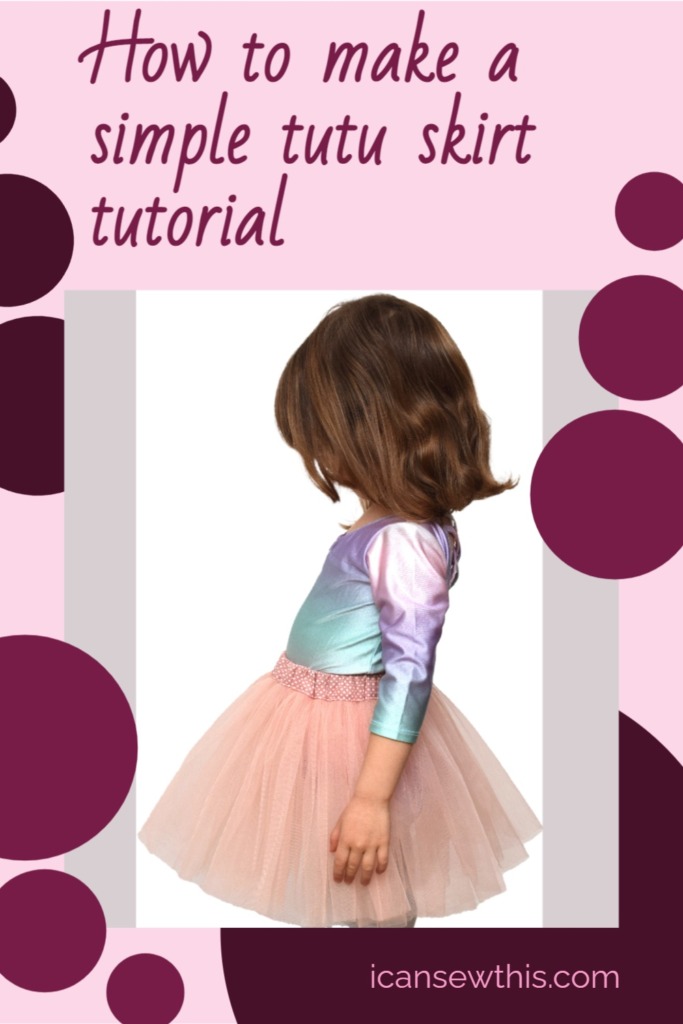
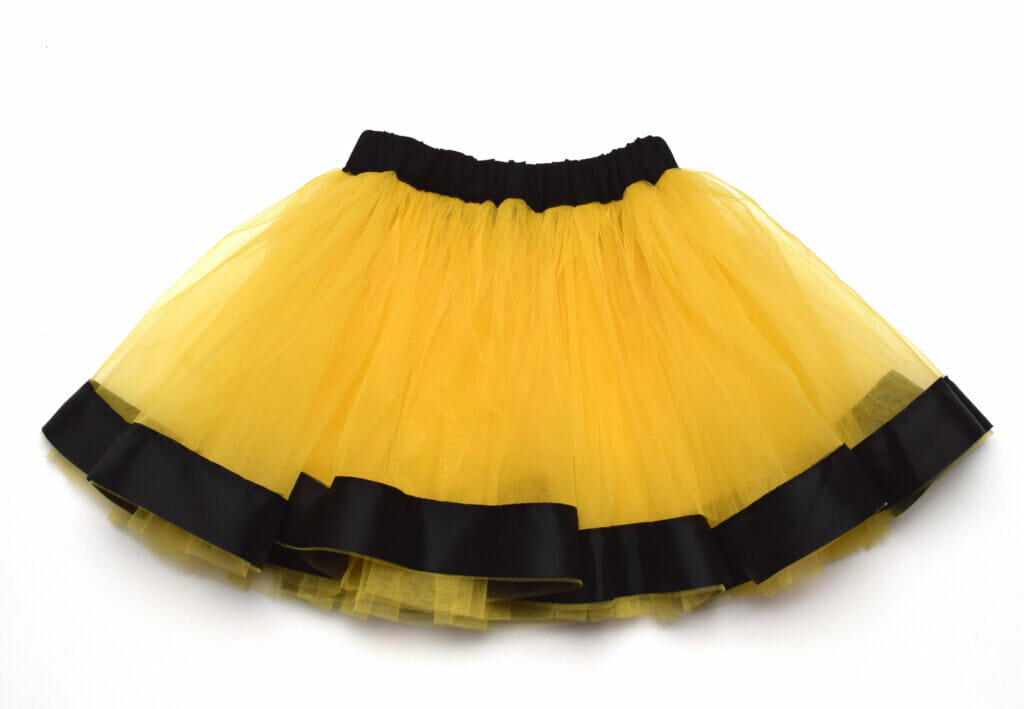
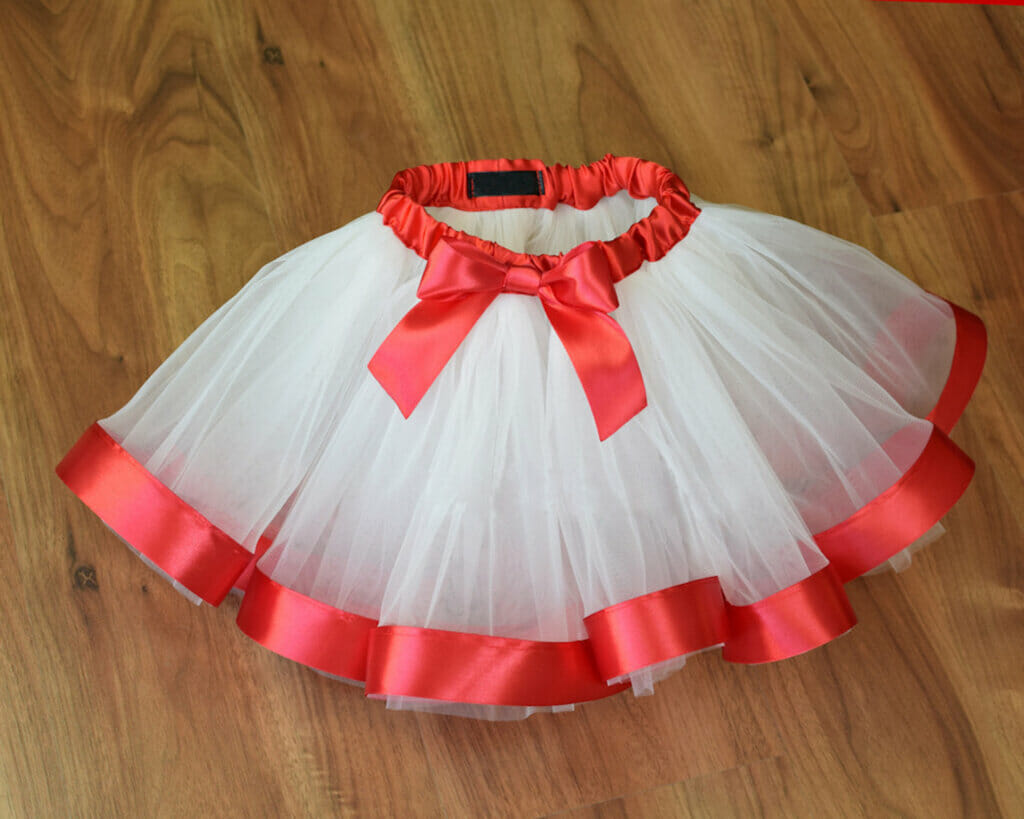

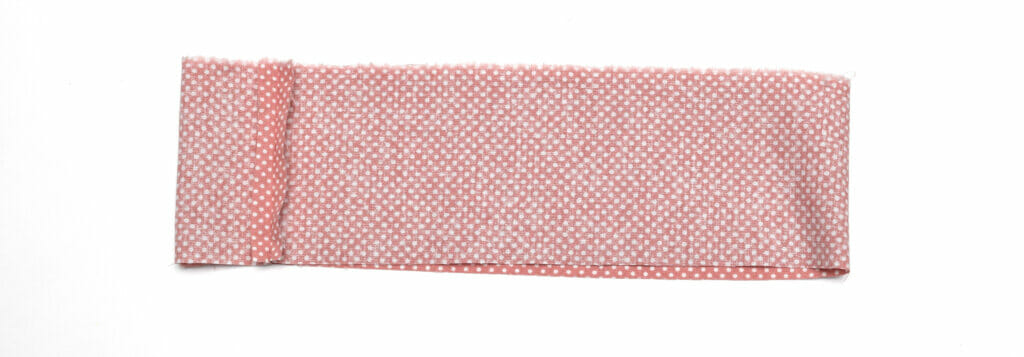
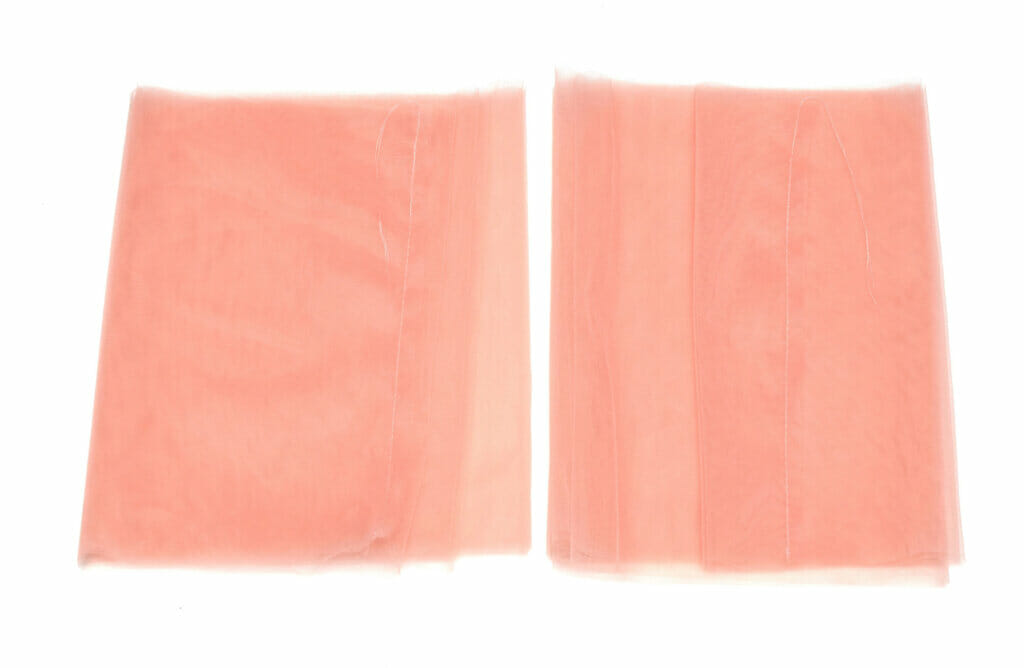
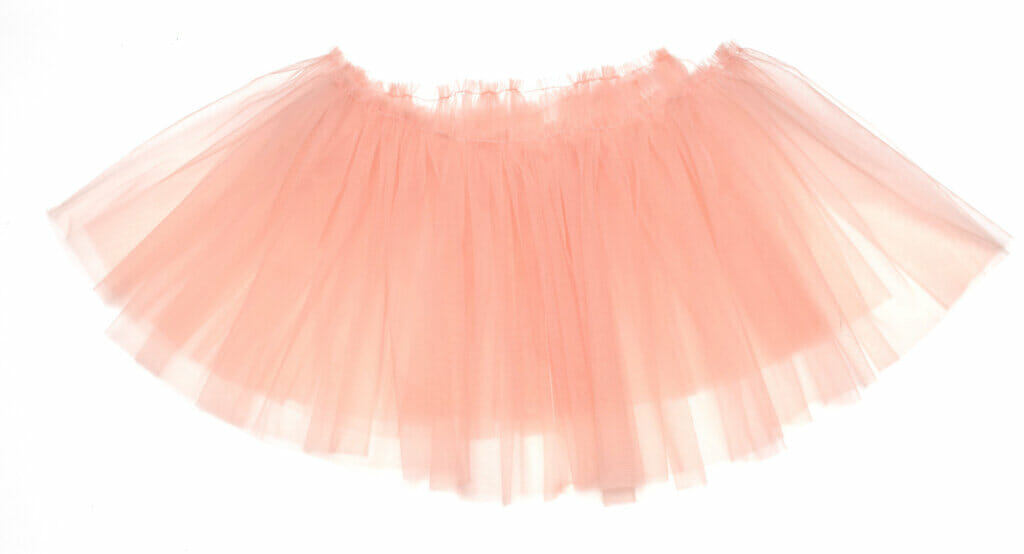
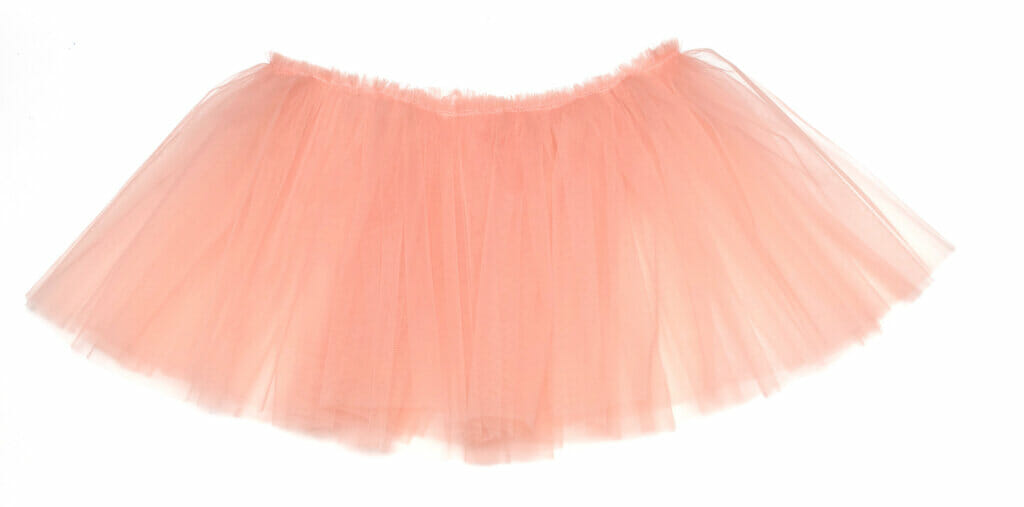
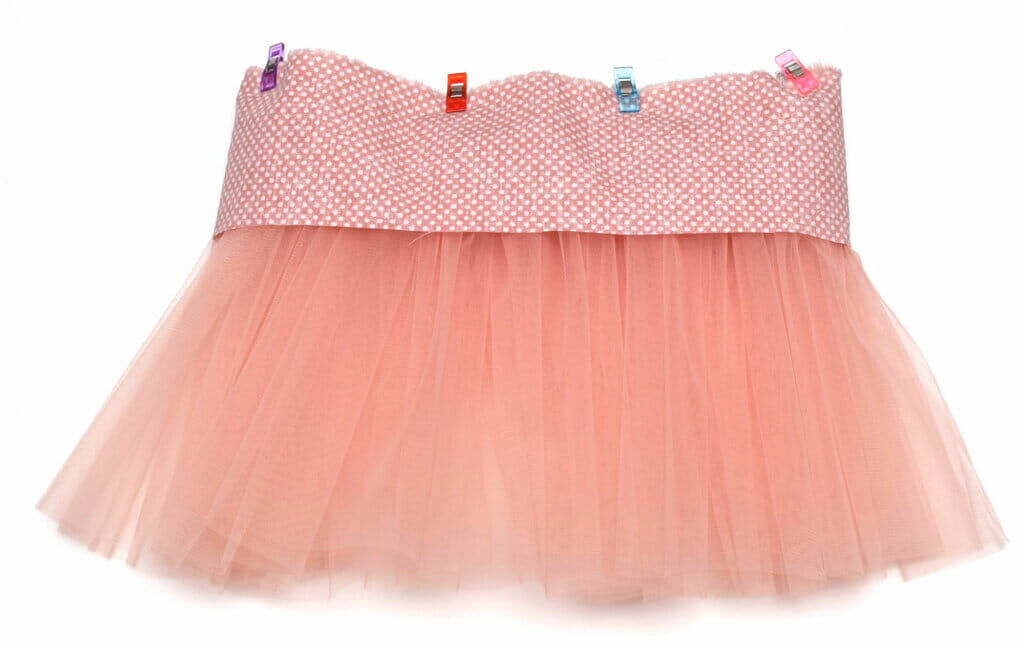
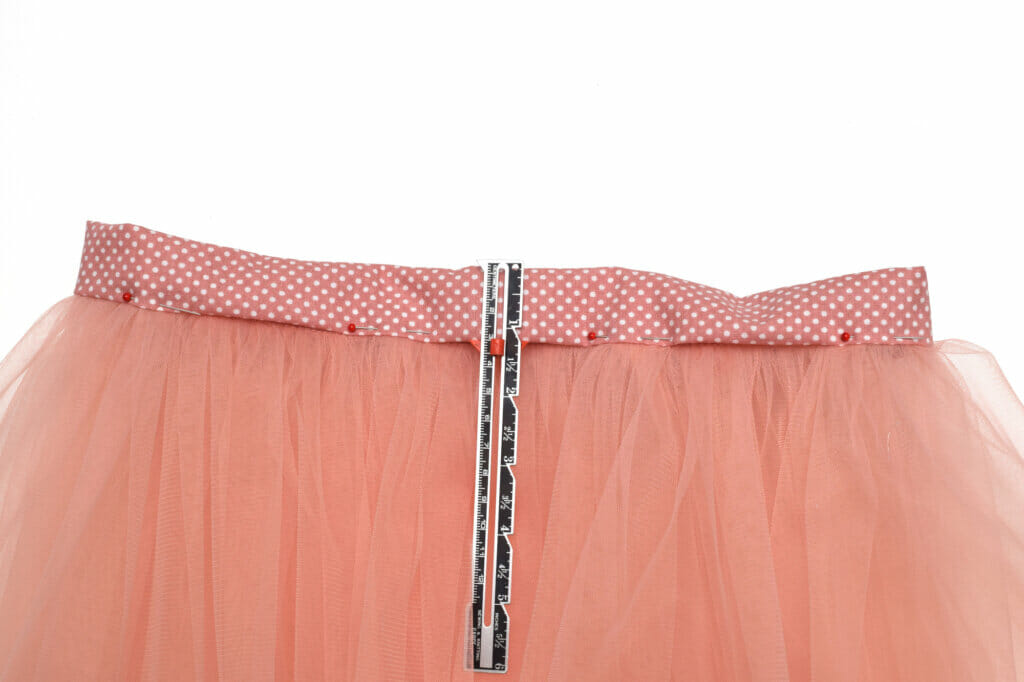
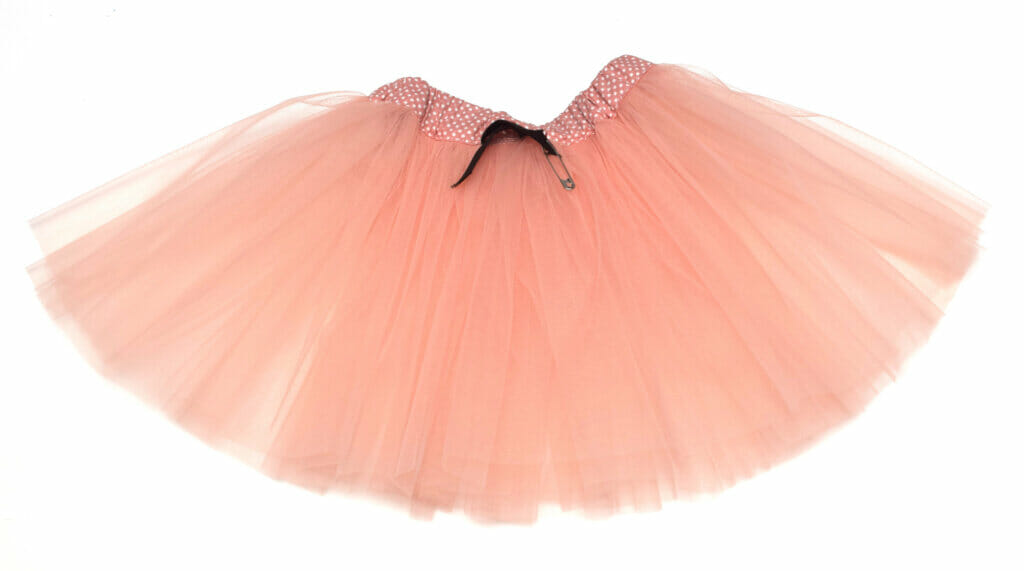
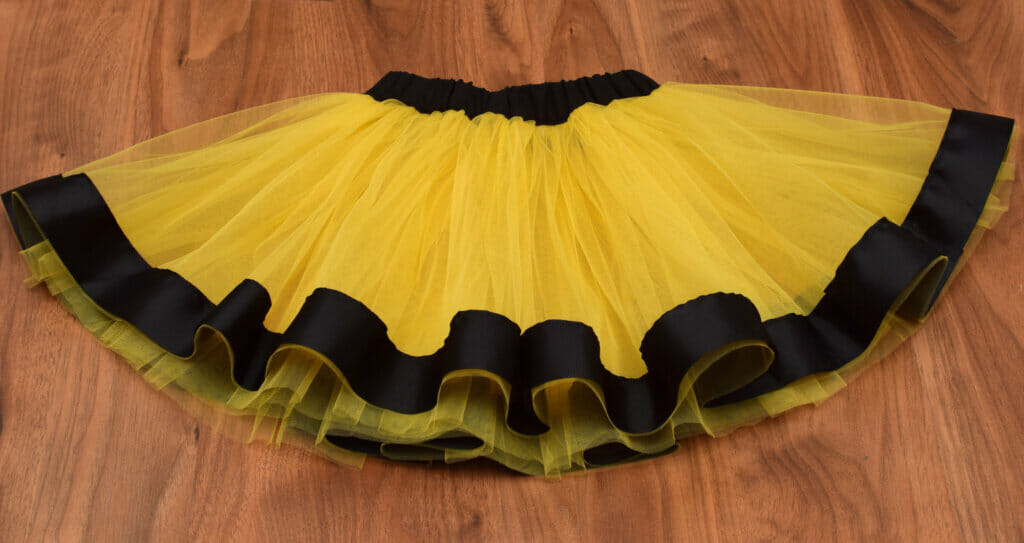
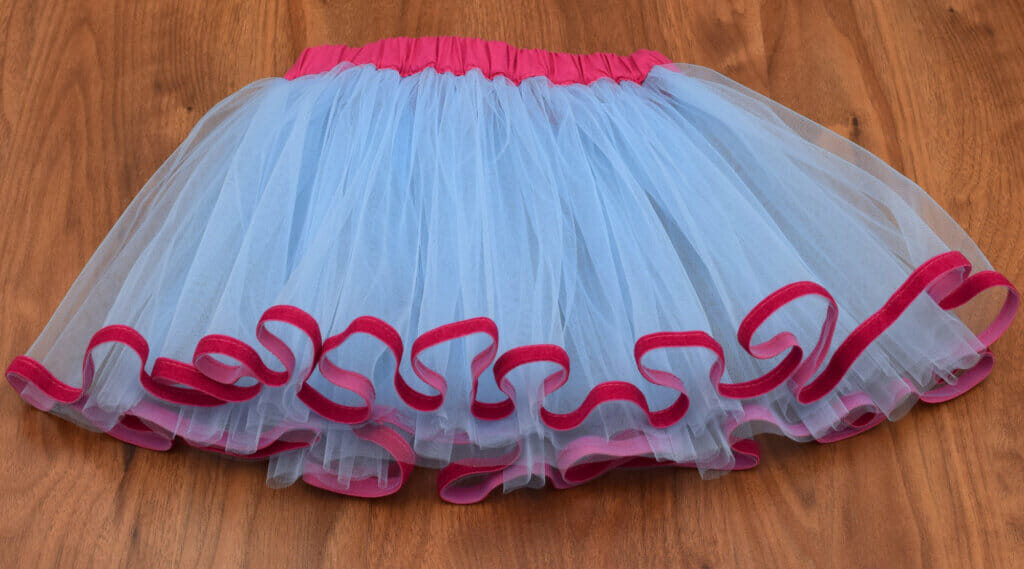
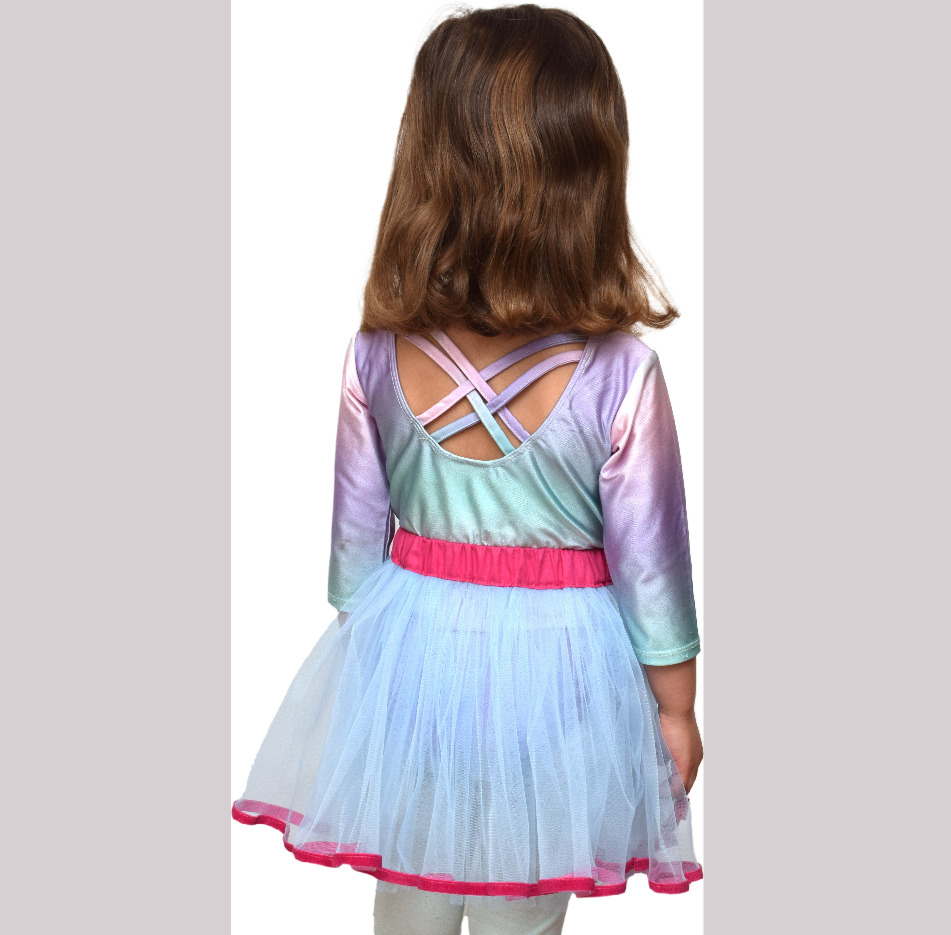
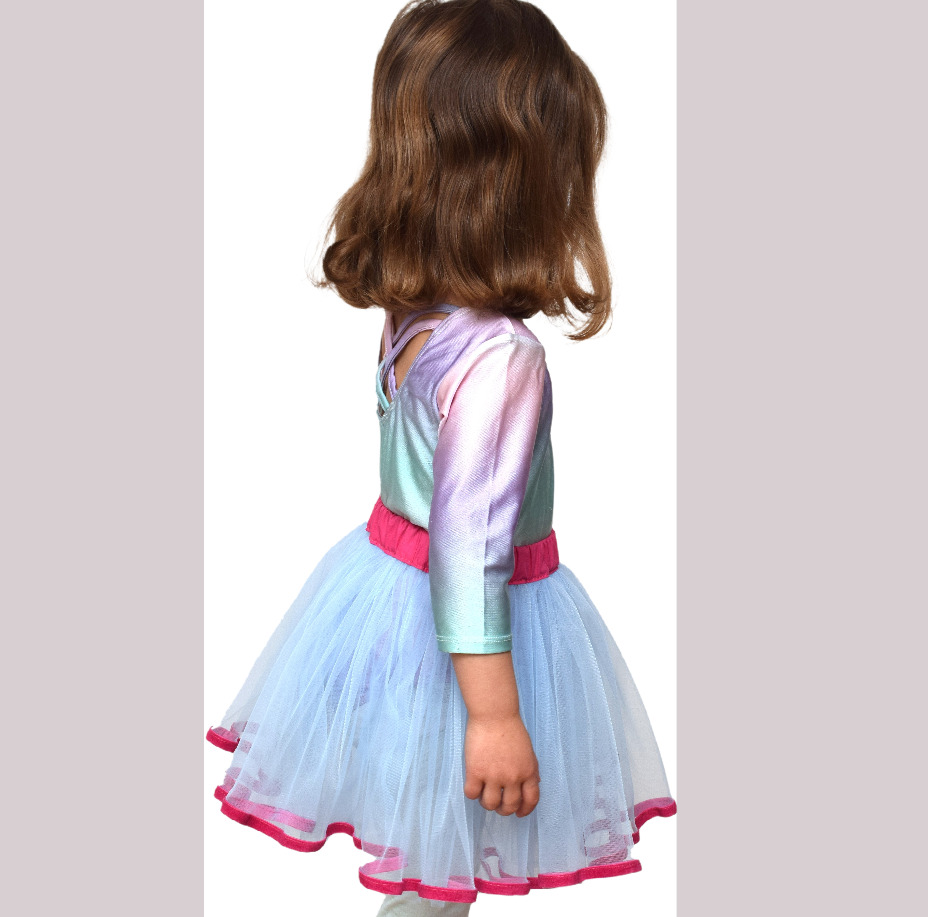
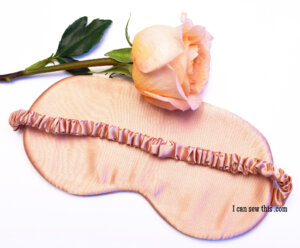
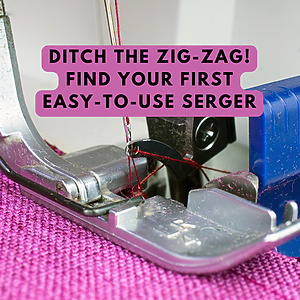

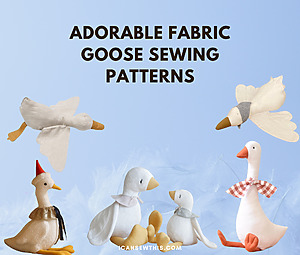
I am in the midst of making this cute tutu. Thanks so much for the tutorial. I am confused when you say to make the waistband hip measurement + 4″. Shouldn’t that be the waist measurement + 4″ ??
Hey Clare,
Thanks for your comment! When it comes to measuring for the skirt, you can use either your hip measurement or your waist measurement. It doesn’t really matter which one you choose, just go with the bigger number. The main idea is to make sure the skirt can easily go over your hips and sit comfortably on your waist.
Happy sewing! Hope everything goes well with your tutu skirt!
Hi! Is there a reason you baste each layer separately, as opposed to basting and gathering the two layers together? Making three, so I’m trying to streamline the process. ? Thanks so much!
Hi Kaitlin,
Thank you for the comment! Yes, there is a reason, but either option is fine. If you gather two layers together, your skirt will look like this https://static.icansewthis.com/2020/01/diy-navy-tulle-skirt-elastic-waistband-for-girls-768×599.jpg
(it’s a pic from this tutorial https://icansewthis.com/how-to-sew-a-tulle-skirt/)
Gathering each layer individually makes for a fuller and fluffier skirt, but gathering the layers together results in an equally gorgeous skirt. The only difference is that the gathers are more tame / put-together in the second version. Not sure how to describe it, but hopefully you get the idea.
Hi – Lve your patterns! I just stumbled on your site looking to make some dress up clothes for my granddaughter for her birthday. I’m super excited to get started. Can you please tell me the height and width of the bodice pattern piece? I want to be sure I printed it in the correct format.
Thanks so much, Sue
Question—I cut the waistband 3.5” as instructed, sewed the tulle on with 0.5” seam, turned under other edge of waistband 0.5”. So now I can’t make waistband 1.5” wide as now it is only 2.5” wide before folding. Should the original waistband be cut 4” to accommodate a 1” elastic?
Hi Mary,
Everything seems to be fine from what I gather. Your waistband is now 2.5″ wide, as it should be. Once you fold it, it will become approximately 1.25″ wide and that’s just perfect for inserting a 1″ wide elastic. I’m keeping my fingers crossed for you! Best of luck!
Wow! Thank you for this simple and easy steps. I will give it a trial.
Lovely tutorial. I am adding a cotton underlayer so my granddaughter can wear the skirt out, as I know she will want – with wellies preferably! I will use same fabric at waistband. Thank you
Thank you “sew” much for this wonderful sewn tutu skirt tutorial! I am an extreme novice at sewing and your tutorial walked me step-by-step as I needed to complete this wonderful project! The addition of the bottom ribbon really turned the project from so-so to wow! Thank you for showing this option and how to complete it! Thank you for the encouragement to try a new material. I found sewing the tulle a breeze! I am so proud to be able to send my daughter to school for “tutu” Tuesday (2/22/22) with my project that looks professional! While I’ve come across many of the tulle-tied-around-the-waist tutu’s (which I have made and are also fun), this method is very classy and will work for a lined skirt as well. So many options. Thanks again for this excellent tutorial!
Was that one yard of tulle for your daughters size?
Hi Michelle,
I wish I got back to you sooner, so sorry I missed your comment!
To answer your question, I used far less tulle for these tulle skirts (length 12” = tulle layers+waistband length).
For each tutu skirt I used 2 tulle layers, each being 118” (300 cm) wide and 10” tall – so that means 118” by 20” in total for one skirt.
That means that you can make 4 such tutu skirts out of 1 yard of 118-inches wide tulle.
118 inches = 9.8 feet. Is this really the measurements?
Hey Cindy,
Yes, 118″ width tulle is a thing! I was surprised too at first, but it makes sense because it’s a super fine fabric. It’s most commonly used for wedding dresses, bridal gowns etc.
Hello! I wonder if you could please give me some advice? I’d love to use your tutorial to make a tutu for my niece but having measured her her waist and hip are the same size (22”) so I’m not what size to cut. Any advice is very gratefully received x
Hi Natalie,
I think that’s very common with kids – their waist measurement is always close to the hip measurement. The most important thing is to make the skirt opening big enough to slide easily over the hips – meaning 22” + 4 or 5 or 6 additional inches for ease. I always look at a kids size chart by age (search on Google) to find out what to expect in the future, because I always want my daughter to be able to wear the skirt for 2 years. So, the waistband of your skirt will be 27” long, let’s say, and the elastic will be shorter than the waist measurement, maybe 20-21” (that depends a lot on your elastic, I sometimes cut mine at 18”…)
Thank you so much that’s really helpful! Will let you know how I get on! Thanks for the fab tutorial! X